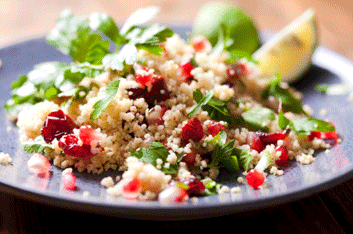Nutrition: Time to indulge in cranberries and pomegranates
Now that turkey leftovers are almost a distant memory are you thinking that ruby-hued pomegranates and cranberries are also behind

Now that turkey leftovers are almost a distant memory are you thinking that ruby-hued pomegranates and cranberries are also behind you? Think again! Most grocery store produce sections are still loaded with these antioxidant rich, versatile fruits, so now is a great time to experiment with adding more of their tasty goodness to your diet. And they’ll help provide the seven to eight half-cup (125 ML) servings of fruit and vegetables that Canada’s Food Guide recommends women from age 19 to 50 get each day.
While cranberries have long been know for their ability to help prevent urinary tract infections, turns out that studies have also shown that drinking cranberry juice cocktail can increase good cholesterol. As well, certain compounds in these tart red berries were found to lower the viability of prostate cancer cells.
Pomegranates have an equally impressive nutritional resumé. For example, one serving provides 14 percent of your daily needs of vitamin K. Low levels of this vitamin have been associated with a higher rate of osteoarthritis in hands and knees. And both fruits are loaded with fibre and vitamin C.
For more about the nutritional benefits of cranberries and pomegranates, and for creative ways to add them to your meals, see Rubylicious in the January/February issue of Best Health (on newsstands today). Try adding fresh or dried cranberries and pomegranate seeds to couscous (as shown above). And, check out our 10 ways to cook with pomegranate or brown and wild rice, walnut and dried cranberry salad.
What are your favourite ways of serving these vitamin-rich fruits?




